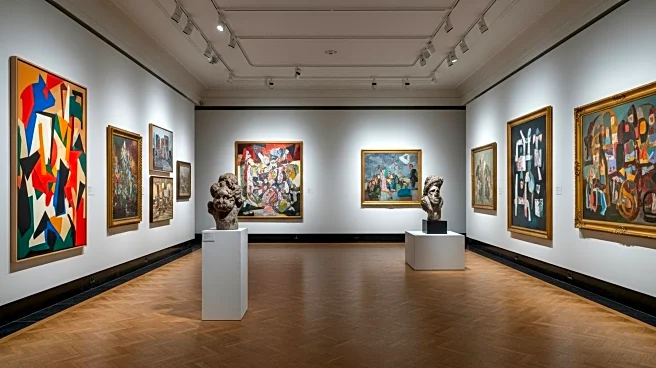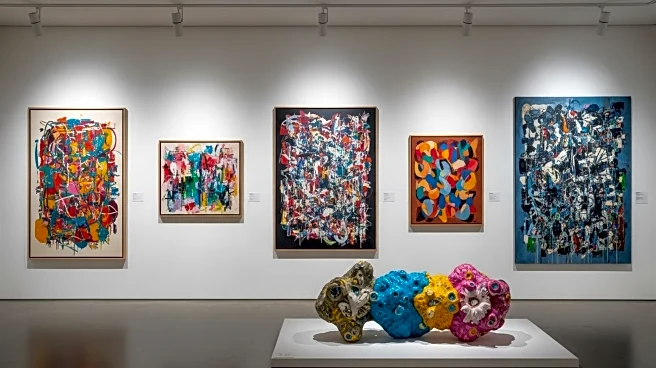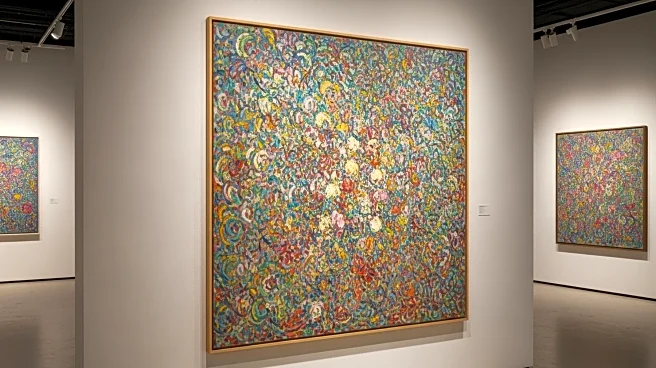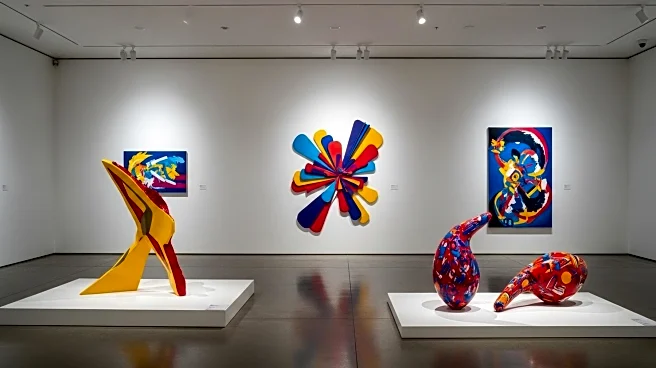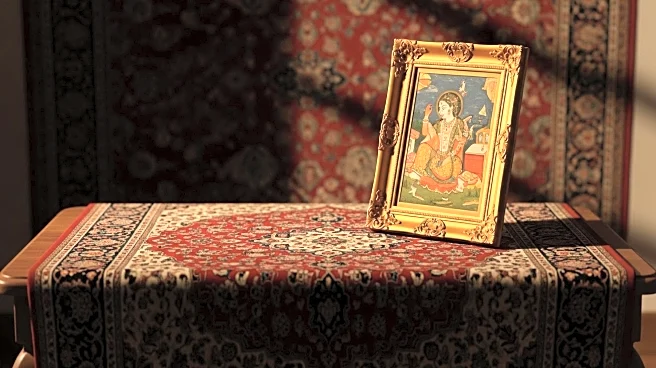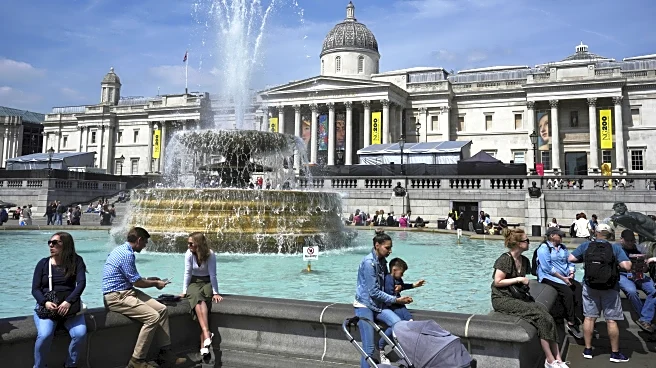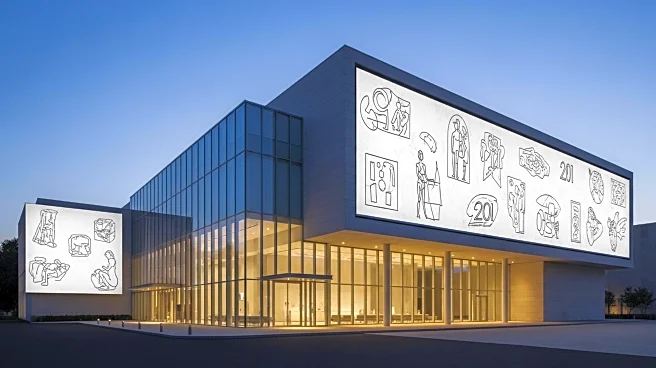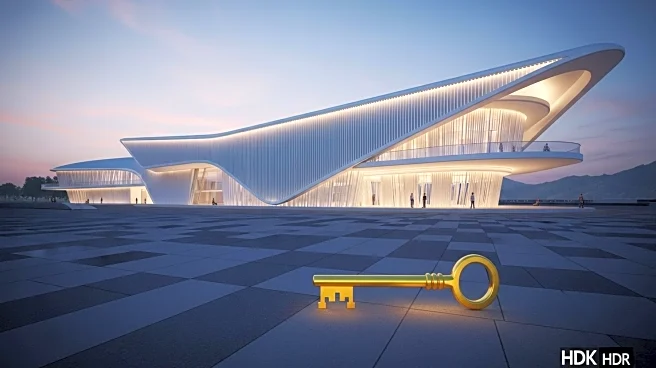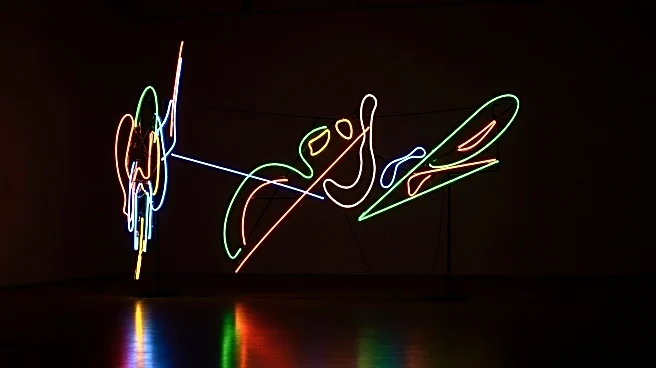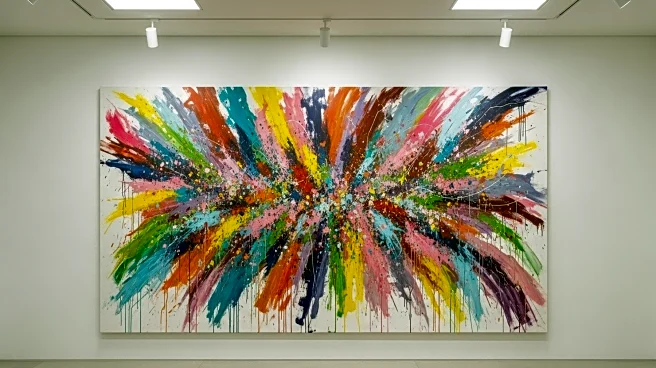What's Happening?
The National Gallery in London has announced plans to expand its collection to include art created after 1900, a move that has raised concerns about potential conflict with the Tate, which specializes in modern art. This decision has led to the dissolution of a longstanding agreement between the two institutions regarding the allocation of artworks. While Tate director Maria Balshaw publicly welcomed the change, reports suggest that there is internal apprehension about the potential for 'bad blood' between the museums. The expansion is seen as necessary by some Tate staff, who argue that the previous cut-off date was becoming increasingly arbitrary.
Why It's Important?
The decision by the National Gallery to expand its collection could have significant implications for the art world, particularly in terms of how public institutions manage and curate their collections. This move may lead to increased competition between museums, potentially affecting funding, visitor numbers, and the acquisition of new works. The shift in policy could also influence other museums to reconsider their collection strategies, leading to broader changes in the art industry. The potential rivalry between the National Gallery and Tate highlights the challenges faced by cultural institutions in adapting to changing artistic landscapes.
What's Next?
As the National Gallery begins to implement its new policy, both institutions may need to navigate the complexities of overlapping collections and potential competition for artworks. Stakeholders, including museum patrons and art historians, may weigh in on the implications of this change, potentially influencing future decisions. The situation could lead to discussions about collaboration or new agreements to ensure both museums can coexist without conflict.
